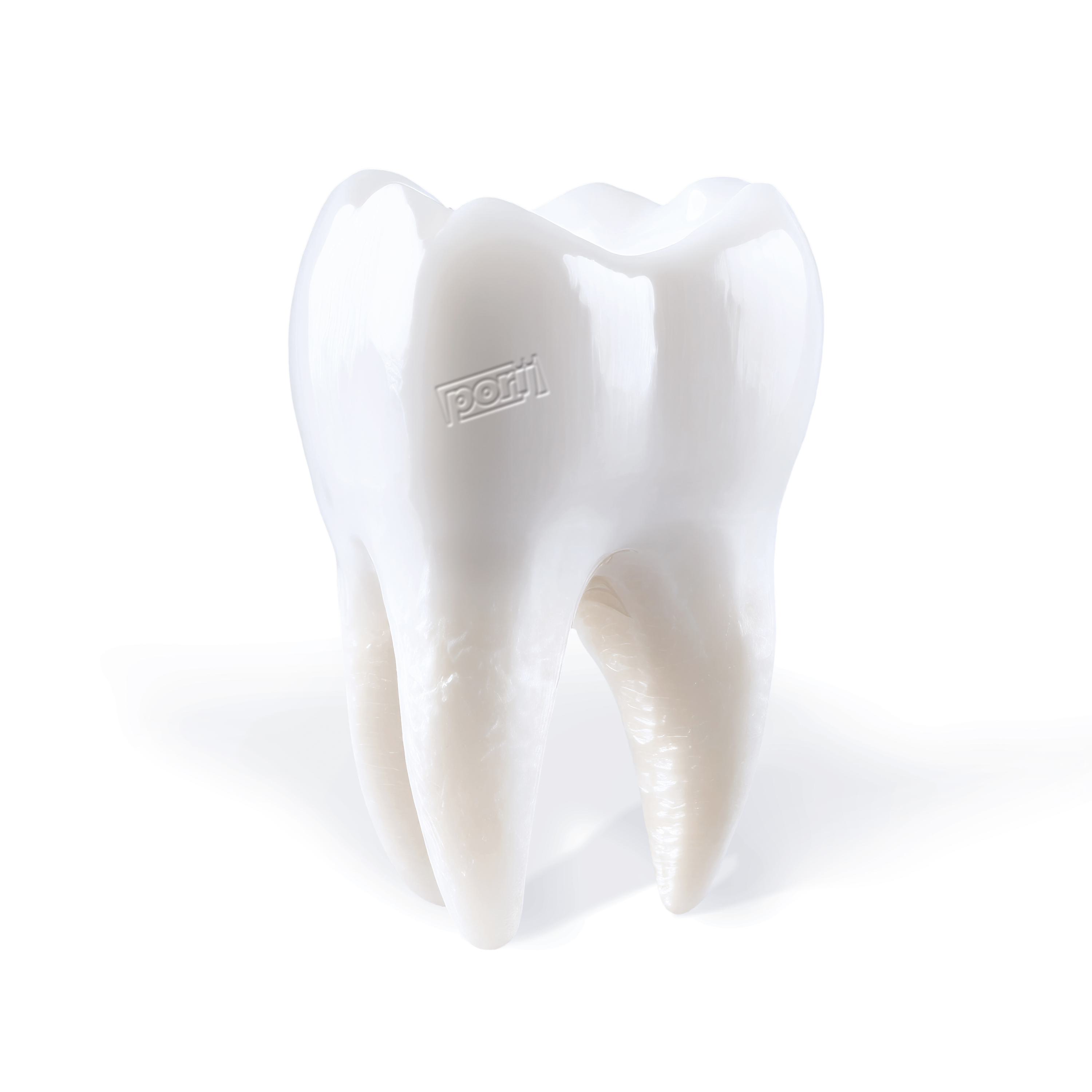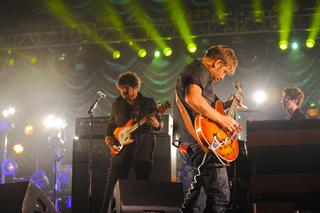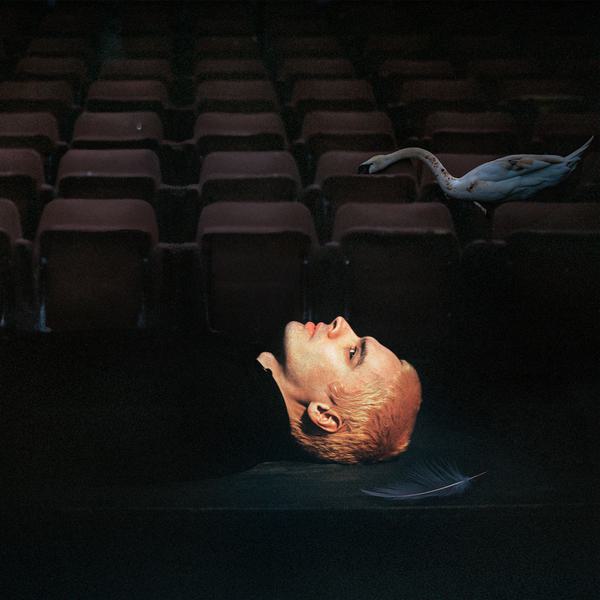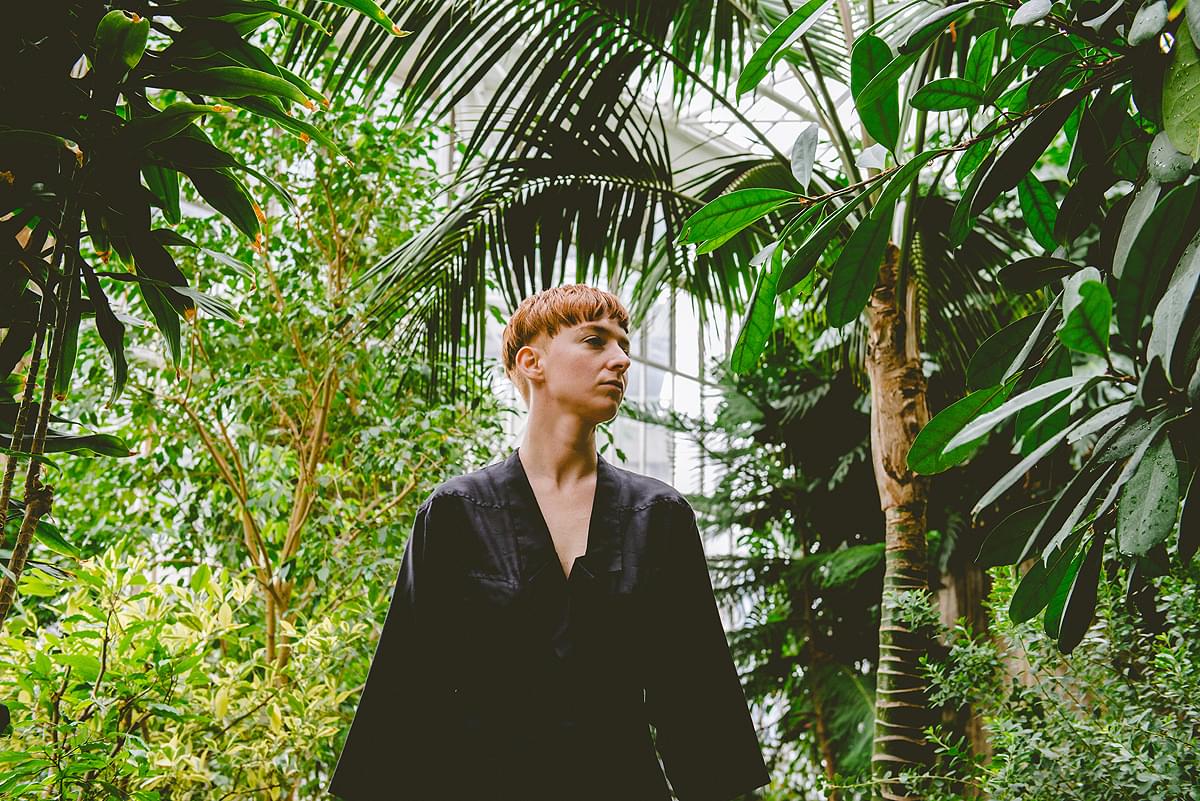
Beyond the Concrete Retreat
Manchester's LoneLady emerges from her tower block cocoon to discuss the isolated process behind second album Hinterland and how she creates a world where pop music and post-punk sit side by side.
Artists suffer for their art, that's nothing new. But the self-induced isolation Julie Campbell sought to create on second album Hinterland is a tale of extremes.
Distorted and enlightened by her industrial landscape, she wandered Manchester's barren outskirts alone before returning to a tiny studio flat in the crumbling Brunswick Mill. Here, and with limited equipment, she created Hinterland. A record that beats lithe and direct, pulling colour from the concrete and comfort through claustrophobia. Now she's out, will she ever go back?
LoneLady is half laughing, half eyeing me cautiously. I've just reduced the entire backstory of her second album Hinterland to pure fairytale rhetoric.
"It's taken on its own mythology," I explain. "LoneLady by name, LoneLady by nature. You locked yourself away in your tower block flat on the outskirts of Manchester and made a record. A post-punk, funk referencing beauty that sings to the concrete walls; tales of isolation and wandering through the city's wasteland. An odd, colourful disfiguration from self-induced claustrophobia. You've told interviewers the process was bleak but necessary. That you were always cold, that there were rats. Best of all," I insist, "instead of throwing your hair out the window and craning to be rescued, you shaved your head and didn't see anyone for weeks, right? Ker-ray-ay-zee."
Now she's fully laughing, which is a relief. "Exactly," she smiles. "But my name, it was never a manifesto. It was a gradual thing over time. And I never decided to move into a tower block because I love tower blocks. My whole adult life I've lived in this tower block next to the motorway and been surrounded by concrete, so I just keep sort of returning to it as this kind of… muse."
"So the head shaving," (I have to know). "That was a necessity too? I mean, it wasn't like this intense monastic ritual? LoneLady, standing alone in an industrial ruin, flakes of hair slowly floating to the ground as she stares coldly back at her own reflection. Now she is ready: ready to create."
"Er, no actually. I think it was that," she laughs. "That was part of it. It just kind of, you do start to get a bit distorted. That's how I did feel actually, that's why I did do it. It seemed the right thing to do at the time."
If all this sounds a little far-fetched, it's because it is. The process LoneLady endured to create her second album for Warp Records is rare. That she should come out on the other side compos mentis with a nice new haircut, a bright groove-ridden album and a rich, philosophical understanding of the interplay between psychogeography and pop music is rarer still. And that's why we're meeting here, the Barbican Centre. Ready to discuss LoneLady's invitation to participate in 'Station To Station'. One of the most ambitious, multidisciplinary contemporary arts 'happenings' of recent times curated by US artist Doug Aitken and hosted for 30 days at the largest performing arts centre in Europe.
"I have often felt very oppressed and compressed by concrete but at the same time it can be a place to retreat, a safe place, a protective space. In my music I talk a lot about that."
For the last three days she's been given unprecedented access to the site. Julie Campbell has been filming, thinking and working out how best to re-contextualise the theories and questions raised by Hinterland for a special one-off performance titled Retreat or Danger.
"It's such a landmark place. It's been so filmed, so photographed and so talked about. I felt the only way I could bring something new or a bit more idiosyncratic to this was to focus on the interior aspects," she says of The Barbican. "How concrete makes you feel psychologically, that's what the Retreat or Danger subtitle of the residency is referring to. In that sense, my tower block experience and my experiences here mirror each other because I have often felt very oppressed and compressed by concrete but at the same time it can be a place to retreat, a safe place, a protective space. In my music I talk a lot about that. I like to think a lot about military architecture, bunkers and so on. I just find those contrasting elements really interesting. And that's what's going to underpin what I'm doing here.

That Retreat or Danger paradox stems from one of LoneLady's favourite questions, something she excavated from the theories of Brutalist Architecture, the low cost, quick fix movement favoured by governments in the late 50s and 60s that saw massive concrete fortresses erupt from Europe's post-war ashes. High rise living quarters and monolithic institutes, a sobering and stoic declaration of recovery.
At their very best they've become iconic. Take the Barbican itself, a sprawling concrete estate Grade II listed in 2001, its harsh grey frame a celebratory synonym for the strength and necessity of the cultural work it houses. But at their worst, they symbolise the cruel process of industrial dehumanisation. Cramped estates, a series of unsettling, uniform scars across a city's skyline.
LoneLady wonders: are these structures friendly or threatening? And her answer (they're both) is the key stone to Hinterland. Volatile funk vibrations pulse with angular endorphins. Bubbling analogue grooves flex in a taut post-punk framework. It's as much Gang of Four terror-brooding as it is spurred on by glistening techno grooves, as trembling with the solitary immediacy of Ian Curtis as it is Betty Davis tough. Put simply, it's precisely because she found her wasteland so dank, isolating and oppressive that she was able to find colour and freedom.

"Being a hermit, going on retreat, it's a very solitary inward journey really," she says. "And yet the music is pretty upbeat, up tempo, quite poppy. I think that in some ways maybe this environment forces an urgency, a sense of restlessness. That's why the music sounds like it does. A lot of the music on Hinterland to me is quite kaleidoscopic and colourful and very visual. To me most of the songs are quite brightly colourful paintings."
She always knew she wanted to be an artist. No idea why, "I've always, always known," she shrugs. This desire to create burned bright despite growing up in a household with "nothing overtly musical" going on. During her Fine Art degree at hometown uni Manchester Met she joined a band. More specifically, "an apprenticeship band," because "I always knew I was going to do my own thing." Then she found a four track recorder, an important discovery still recounted with reverence. That was "the real kind of moment," she says. "Once I started recording songs by myself like that I was like, ah. This is it."
"Limitations can be quite freeing. I've made two records now using this quite basic gear. I think it's that thing of finding a sound through the materials that are available to you."
That tape recorder formed the basis of 2010 debut album Nerve Up. The terse skeleton of Hinterland; more agitated, more sparse, more post-punk. So post-punk in fact, UK music journalist Paul Morley declared her a worthy contemporary to the stars of his formative years. This isn't "insipid sentimentalised nostalgia," he cried, etching her name alongside his most revered; Magazine, Joy Division, the Fall, Ludus, Blue Orchids, Echo & The Bunnymen, Wire, Bush Tetras, Gang of Four, Joy Division, Public Image Ltd.
That a debut album, recorded in a tiny tower block flat with limited equipment, limited funds, limited human contact should soar into the mythical post-punk history books and still shine a glaring search light into the future is nothing short of magic. A case study for any young creative to keep on keeping on.

"Limitations can be quite freeing," nods LoneLady. "I've made two records now using this quite basic gear. I think it's that thing of finding a sound through the materials that are available to you. I use an 8-track Tascam portastudio which is a really basic bit of kit. As is all my gear really. I used GarageBand a lot on the last record, just to finish things off. But I don't want the laptop to be part of the writing equation anymore. I definitely know the route to take is the hardware route, the analogue route."
With a near complete set of Hinterland recordings, LoneLady took her tapes to Bill Skibbe's Keyclub Recording Co. in Michigan. An analogue Aladdin's Cave that allowed the pair to carefully mix the record, sewing live drums and various synth relics through the tracks, often the original demos. Does analogue sound better? "Absolutely," she retorts, bulking against any mention of software or emulation. No EMS plug-ins for Julie.
Determined by nature, this analogue love affair has informed her live show for better and for worse. Despite the impracticalities of lugging all your gear around on tour - she rolls her eyes as she recalls the sampler that "konked out" onstage in Brussels, the tactile, unpredictable pleasure found in her hardware forced her to become a performer.
"Playing live is something that I find much more challenging. I feel that my natural habitat is in the studio. But this record I feel we've made improvements. Like, we're a four piece. I just felt I needed more people around me to bring the record to life. I want people hitting electronic drum pads, I want people pressing keys and turning dials. I don't want to press play on the spacebar or tap the screen and get a backing track going. I'm not interested in that."

This uncompromising commitment to her role as a frontwoman, as the maestro of a show and someone who wants to offer up as clear a vision of 'LoneLady world' as possible explains, in part, her fascination for pop music.
"I do have an urge at some point to make a record and do my damndest to fill it with three minute perfect pop songs."
Because with LoneLady, pop music is like the icing on a juicy, artisan cake. Full of substance and style, new flavours melted through classic combinations and then right there on the top, a big ol' dollop of frosting. The part everyone recognises and wants to taste. The part that invites you in.
Take "Groove It Out", Hinterland's first single, which we compared to Moloko's Sing It Back in our original review. Whether you consider Roisin Murphy and Mark Brydon's original or the souped up summer remix is neither here nor there because the point is that lead melody. So immediate, so clipped. Notes sung as they were written. Bright bullet holes that pierce through the track's angular groove and leave perfectly round circles bursting with colour. You could just as easily mooch about to it in the corner of a warehouse party (in a tower block, how meta) bobbing your head innocuously to its groovy innards as you could turn it up and strut to work in the sun like you give zero fucks AKA the litmus test of any good pop song.
"I think of a perfect pop song," Julie smiles. "A three and a half minute pop song, with a brilliant verse-chorus-verse-bridge section and I just think, that's beautiful. It's a beautifully formed structure. I still feel very much in the extended groove 12" kind of headspace at the moment and I still think I'll be doing that for a bit. But I do have an urge at some point to make a record and do my damndest to fill it with three minute perfect pop songs. But it's not easy. They sound so effortless. And catchy and brilliant. But you try and sit down and do that, it's hard."
"I think that ties into my interest with funk music actually," she continues. "Pop music is very lean. There's no extraneous embellishment there that doesn't need to be and I'm really attracted to things that are economical and lean. For me, Hinterland is quite a full record in terms of arrangements. I almost want to strip it back again. Never Up, the first record, was very stark."

Two albums down and we find LoneLady in a powerful artistic headspace. She's not only settled on the process that suits her best (for now), but the sounds she needs to execute it. Armed with this metaphysical toolkit, is she finally ready to leave the place that formed it, that formed her? She's lived in Manchester all her life, thirty-something years. So it's not surprising reviewers have been quick to champion her as a kind of musical Mancunian Morse. Dissecting the city's constructed and cultural heritage through a skewed pop lense.
"I'm not sure I'm ready to go back into the cave yet, so to speak. I'm not sure I can do that again, I don't think I could handle it again, so soon. So for me, some things need to change."
I tentatively suggest the Barbican residency is symbolic of her first steps away from home and she's quick to admit that the only thing stopping a move to London right now is money. Following her time in Skibbe's studio she even fantasised about Michigan. "It's like Manchester but much bigger," she enthuses, "and industrial so I felt at home."
She's not reliant on Manchester, then? "Place and space and buildings is an ongoing fascination for me and that is very much a translatable, transferrable idea," she affirms. "Right now, I feel like I need refreshment and change. Just because I don't want to repeat myself really. I'm not sure I'm ready to go back into the cave yet, so to speak. I'm not sure I can do that again, I don't think I could handle it again, so soon. So for me, some things need to change."

Before I can start quibbling over how LoneLady's music might evolve should it bubble from the walls of an East End flat or a Croydon high rise, I'm reminded just how deep-rooted her Manchester beat is. While she was busy building her sound and studio inside its heart, it rooted itself in hers. Paul Morley felt it and so did former PiL (Public Image Ltd) man Jah Wobble. When he first heard LoneLady's music he earnestly assumed he was listening to covers of early Buzzcocks or Joy Division tracks that had passed him by. He was so taken in fact, he invited her to write and record an album with him, 2011's Psychic Life.
"Wherever I am and my bits and pieces are, that's Concrete Retreat," LoneLady says of her studio. "It is an ongoing thing, a moveable thing."
Will Warp Records follow her on that journey, I wonder. Will the label famed for intricate and explicit electronic experimentation stand by LoneLady as she carves out her next chapter from a new set of ruins, polishing, refining, thinking about how perfect those three little minutes could sound.
"I do feel like a slight oddball on there sometimes, I know I'm not necessarily a typical Warp artist. But I do feel that Steve [Beckett, label founder] and I connect on some level, in a way that doesn't really need to be explained. He kind of believes in me, which sounds a bit corny, but I do feel that and that is important. And you know, we both want the same things. I just wanna keep on making cool music and that's what they want, so."
Get the Best Fit take on the week in music direct to your inbox every Friday

Maria Chiara Argirò
Closer

Justice
Hyperdrama
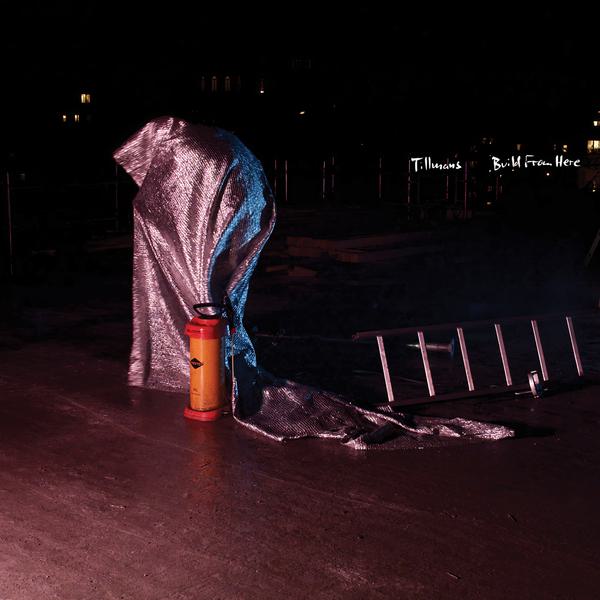
Wolfgang Tillmans
Build From Here
